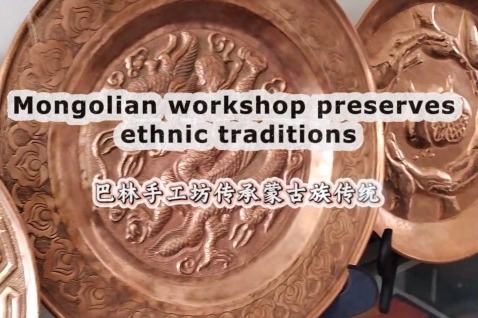Turning the tide on vanishing village life


According to the third annual China National Conference on Historic Villages, traditional Chinese villages are vanishing at an alarming rate due to human or natural factors.
Over the decade from 2000 to 2010, the number of ancient villages dropped sharply from 3.6 million to 2.7 million. As of last year, a total of 1.6 million villages had disappeared across China, and this number is continuing to decline at an average rate of 1.6 per day.
With the purpose of raising people's awareness about this social phenomenon and the preciousness of traditional Chinese village culture, a forum was held in Beijing on May 14.
Hu Binbin, the director of the Research Center of Chinese Village Culture at Central South University in Changsha, Hunan province, stressed the importance of villages at the event.
"You may not come from the country, but the older generations in your family must have lived there. Because villages came first, before the cities. Villages are the foundation of culture."
Hu asserted that villages are the carriers of traditional culture, and the key link between ancient peoples and with those in the modern age.
Rejecting the argument that the disappearance of villages is a natural and reasonable consequence of mass industrialization and modernization, Hu maintained that no development should come at such a huge cost.
"Between the modern and the traditional, the past and the future, we should not lose our origins, but instead find a connection," said Hu.
Li Wuwang, the founder of the Great Channel, an online documentary channel, has been trying to create an archive of all the villages before they exit the stage of history with his documentary, The Great Tribe.
The production team traveled to 326 villages to scout for locations for the series. They created a 20-page presentation to assess the distinctive character of each village, and compare the history and entertainment value of the stories behind each locale. For the first season, the team paid field visits to 18 villages before selecting the final ten. On location, they interviewed over 200 villagers about matters that they really cared about, rather than simply documenting their daily lives from a distance. The team traveled more than 33,700 kilometers to complete the filming of the first season.
Li shared a behind-the-scenes story about the village of Xunlu village in the forests of the Greater Hinggan Mountains in Northeast China's Heilongjiang province, which only has a current population of around 100 people.
Because of the low temperatures in the forest, local residents often turned to alcohol to keep themselves warm. The original choice for the lead character in the episode drank so much that he died before filming could begin. The film crew met his son who had returned from the city, and he reckoned that the village would disappear within 10 or 20 years.
"We created archives of around 100 villages," Li said. "I wish more people would pay attention to these villages, or record them before they vanish. People should know there's something more to life apart from the tiny screen of a smartphone or computer."
Meng Haofan, an architectural designer, came up with one solution to stem the exodus from one village in Zhejiang province.
Last year, he rebuilt a number of old houses in a modern architectural style in Dongziguan village in the Fuyang district of Hangzhou, in a bid to encourage reverse migration.
His modern take on a traditional Chinese village immediately attracted widespread attention, drawing tourists from all over the country.
Posters were produced and a one-day tour was developed. Visitors flocked to take selfies with the stylish new houses as their backdrop. One painter even recorded the moment for posterity.
Meng introduced modern aesthetics to the village as his way of feeding the rural economy.
"Protecting villages helps them further develop, it's a dynamic relationship," Meng said.
Chen Yihuan runs a project named Didaofengwu, which was launched by Chinese National Geography magazine. The project is aimed at helping people to discover local specialties and help them to share their findings through social media, or in a series of books of the same name.
He claimed that below the county level, there was almost no village or town that could articulate its cultural characteristics clearly. This made him determined to raise people's awareness of their native culture and help encourage rural communities to become more culturally confident.
- Rural tourism turns Jiangsu villages' fortunes around
- The Foreign Media's Jiangxi Experience of 2018 Jiangxi Tourism Industry Development Conference has concluded successfully
- Jinzhou develops themed itineraries to boost tourism
- Beijing urban subcenter taking shape
- Sichuan: From an earthquake memorial to 'agritainment'





































